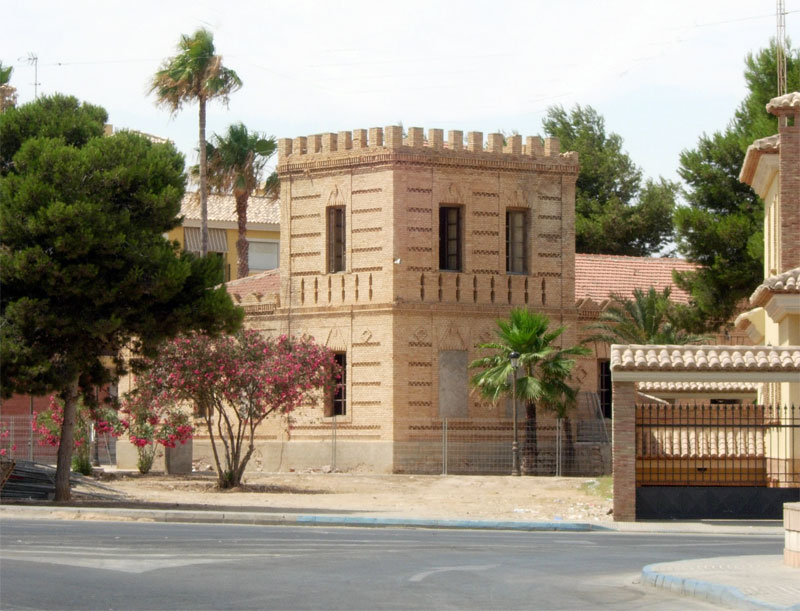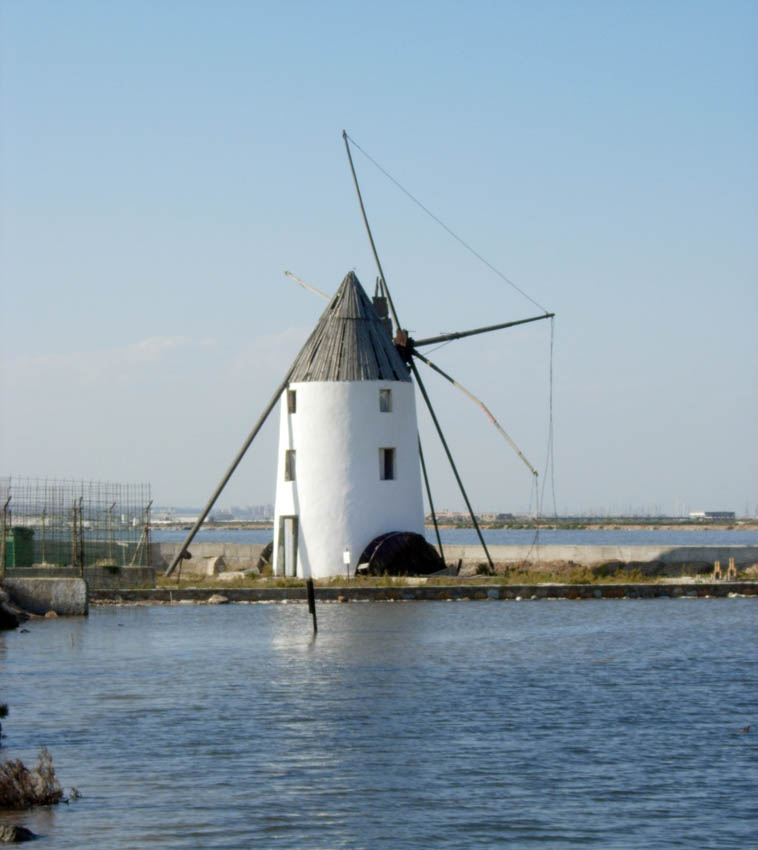San Pedro Del Pinatar on:
[Wikipedia]
[Google]
[Amazon]



 San Pedro del Pinatar is a small town and
San Pedro del Pinatar is a small town and
Local Government website
San Pedro del Pinatar
coastal neighborhood of San Pedro {{authority control Municipalities in the Region of Murcia



 San Pedro del Pinatar is a small town and
San Pedro del Pinatar is a small town and municipality
A municipality is usually a single administrative division having corporate status and powers of self-government or jurisdiction as granted by national and regional laws to which it is subordinate.
The term ''municipality'' may also mean the go ...
in the Region of Murcia
The Region of Murcia (, ; es, Región de Murcia ), is an Autonomous communities of Spain, autonomous community of Spain located in the southeastern part of the Iberian Peninsula, on the Mediterranean Sea, Mediterranean coast. The region is in ...
, southeastern Spain
, image_flag = Bandera de España.svg
, image_coat = Escudo de España (mazonado).svg
, national_motto = ''Plus ultra'' (Latin)(English: "Further Beyond")
, national_anthem = (English: "Royal March")
, i ...
. The municipality is situated at the northern end of Murcia's Mediterranean
The Mediterranean Sea is a sea connected to the Atlantic Ocean, surrounded by the Mediterranean Basin and almost completely enclosed by land: on the north by Western and Southern Europe and Anatolia, on the south by North Africa, and on the e ...
coastline, the Costa Cálida
The Costa Cálida (, "Warm Coast") is the approximately 250 km stretch of Mediterranean coastline of the Spanish province of Murcia. This region has a micro-climate which features comparatively hot mean annual temperatures (and hence its name ...
, and borders the province of Alicante
Alicante ( ca-valencia, Alacant) is a province of eastern Spain, in the southern part of the Valencian Community. It is the second most populated Valencian province. Likewise, the second and third biggest cities in the Valencian Community (Alica ...
. It has an area of almost 22 km2, and a population of 25,167 as of 2018.
History
San Pedro became an industrial territory whose salt mines were used by the Romans. They utilised the salt to produce an ancient Roman sauce calledgarum
Garum is a fermented fish sauce that was used as a condiment in the cuisines of Phoenicia, ancient Greece, Rome, Carthage and later Byzantium. Liquamen is a similar preparation, and at times they were synonymous. Although garum enjoyed its grea ...
.
In 711 CE, Muslim civilizations started conquering the Iberian Peninsula. A few years later they dominated a great part of it, including the current San Pedro del Pinatar. During their occupation, they built fishing structures for a specific type of fishing; in Spanish the structures are known as .
In 1243, the king Muhammad Ibn Hud offered vassalage to the Crown of Castile
The Crown of Castile was a medieval polity in the Iberian Peninsula that formed in 1230 as a result of the third and definitive union of the crowns and, some decades later, the parliaments of the kingdoms of Castile and León upon the accessi ...
. In April of that year, the Treaty of Alcaraz, in which the sovereignty of Castile was recognised, was signed. As a result, all the former Taifa of Murcia
The Taifa of Murcia () was an Arab ''taifa'' of medieval Al-Andalus, in what is now southern Spain. It became independent as a ''taifa'' centered on the Moorish city of Murcia after the fall of the Umayyad Caliphate of Córdoba (11th century). ...
went under Castile's rule. The jurisdiction of the (an administrative division of that era approximately equivalent to the municipality) occupies the territory.
San Pedro del Pinatar was part of the Crown of Castile but it was next to the Crown of Aragon. A border which crossed Campo de Cartagena (a region that is categorised as a ''comarca
A ''comarca'' (, or , or ) is a traditional region or local administrative division found in Portugal, Spain and some of their former colonies, like Brazil, Nicaragua, and Panama. The term is derived from the term ''marca'', meaning a "march, ...
'') and ended in San Pedro was decided in 1305.
A book was written in 1340 called ; the aspect of the current municipality in the Late Middle Ages is described in that work. It was written that the territory was a dense forest mass where wild boar were hunted.
San Pedro del Pinatar's population increased in the late years of the Middle Ages due to the arrival of families.
The localities of the municipality were set up in the beginning of the early modern period. The salt mines were utilised by the lessees who held rights on the mines at a similar level to the Crown. The institution awarded shares to these lessees in order to regain the power on the mines. The convenient access to the coastal salty lagoon of Mar Menor allowed Berber
Berber or Berbers may refer to:
Ethnic group
* Berbers, an ethnic group native to Northern Africa
* Berber languages, a family of Afro-Asiatic languages
Places
* Berber, Sudan, a town on the Nile
People with the surname
* Ady Berber (1913–196 ...
pirates to easily disembark, destroy the region and take the loot. Typical Spanish coastal watchtowers were built along the coast. Philip II of Spain
Philip II) in Spain, while in Portugal and his Italian kingdoms he ruled as Philip I ( pt, Filipe I). (21 May 152713 September 1598), also known as Philip the Prudent ( es, Felipe el Prudente), was King of Spain from 1556, King of Portugal from ...
wrote a letter, in which he announced his intention to set up a tower, on 6 June 1592 in order to set up a defence system for the region. The tower was built in 1602, and it was armed with artillery and manned until the 18th century.
From 1700 to 1713 the War of the Spanish Succession
The War of the Spanish Succession was a European great power conflict that took place from 1701 to 1714. The death of childless Charles II of Spain in November 1700 led to a struggle for control of the Spanish Empire between his heirs, Phil ...
occurred. People in Reino of Murcia (an administrative division belonging to the Crown of Castile whose status was similar to an ordinary kingdom) allied with Philip V of Spain
Philip V ( es, Felipe; 19 December 1683 – 9 July 1746) was King of Spain from 1 November 1700 to 14 January 1724, and again from 6 September 1724 to his death in 1746. His total reign of 45 years is the longest in the history of the Spanish mon ...
. The supporters of the Charles VI, Holy Roman Emperor
, house = Habsburg
, spouse =
, issue =
, issue-link = #Children
, issue-pipe =
, father = Leopold I, Holy Roman Emperor
, mother = Eleonore Magdalene of Neuburg
, birth_date ...
, attacked Cartagena, its port and the region related to Mar Menor in 1706.
During the last years of the early modern period, there were fewer privateer attacks; as a result, there was an economic rise and an increase in population. The municipal registers, in regards to population, stated that the number of inhabitants doubled in the last years of the 18th century (1771–1798).
In 1829 there was an earthquake in San Pedro del Pinatar. In the 19th century there was a cholera epidemic in the region, but San Pedro was unaffected.
During the Trienio Liberal (1820–1823) and taking advantage of the just-arrived liberalism, the people formed a local government, but after 1823, when the political system corresponding to the previous politic regime was instituted, the local government was eliminated and the territory became part of the municipality of Murcia again. After the death of Ferdinand VII of Spain
, house = Bourbon-Anjou
, father = Charles IV of Spain
, mother = Maria Luisa of Parma
, birth_date = 14 October 1784
, birth_place = El Escorial, Spain
, death_date =
, death_place = Madrid, Spain
, burial_plac ...
, liberalism was reestablished. In the context of this situation, San Pedro achieved its own local government again on 16 September 1836.
Coastal customs were set in San Pedro del Pinatar in 1857. In 1869, a law which eliminated the monopoly of the salty mines was presented.
The inhabitants of the municipality relied on fishing and agriculture for their economy. Land-related activity was hindered because of a lack of lands and drought. There were attempts to attenuate these obstacles that consisted of lifting the water by waterwheels and water mills.
The salt mines were among the main economic sources. Some of them were built to decant the water from Mar Menor, and a few are preserved today.
In the 1960s tourism to the municipality increased and led to a rise in economy, and the appearance of construction and service-related jobs. There was an increase in population resulting from the improve of standard of living; in 1971 there were 6,637 people living in San Pedro, and 20 years after the town's population consisted of 13,000 inhabitants.
Demography and administrative divisions
The 24,093 inhabitants of San Pedro del Pinatar are distributed in the following districts: * San Pedro del Pinatar: 10,491 * Lo Pagán: 2,907 * Los Peñascos: 1,594 * Los Sáez: 1,499 * Las Esperanzas: 1,454 * Los Antolinos: 1,238 * Loma de Abajo: 786 * Los Tárragas: 750 * Los Imbernones: 329 * El Mojón: 236 * Los Veras: 211 * Loma de Arriba: 192 * Las Beatas: 104 * Los Gómez: 79 * Las Pachecas: 37 * Las Salinas: 5Others links
* Salinas y Arenales de San Pedro del PinatarReferences
External links
Local Government website
San Pedro del Pinatar
coastal neighborhood of San Pedro {{authority control Municipalities in the Region of Murcia